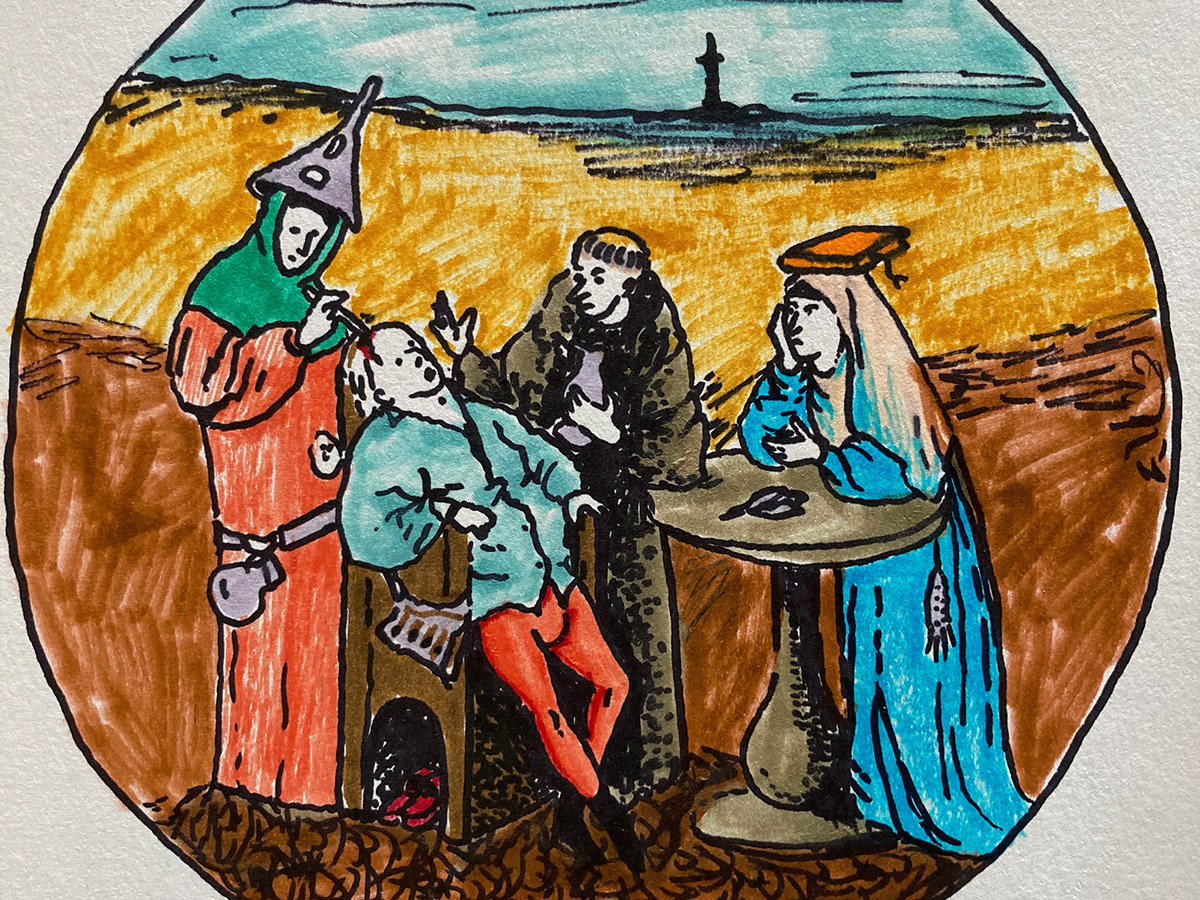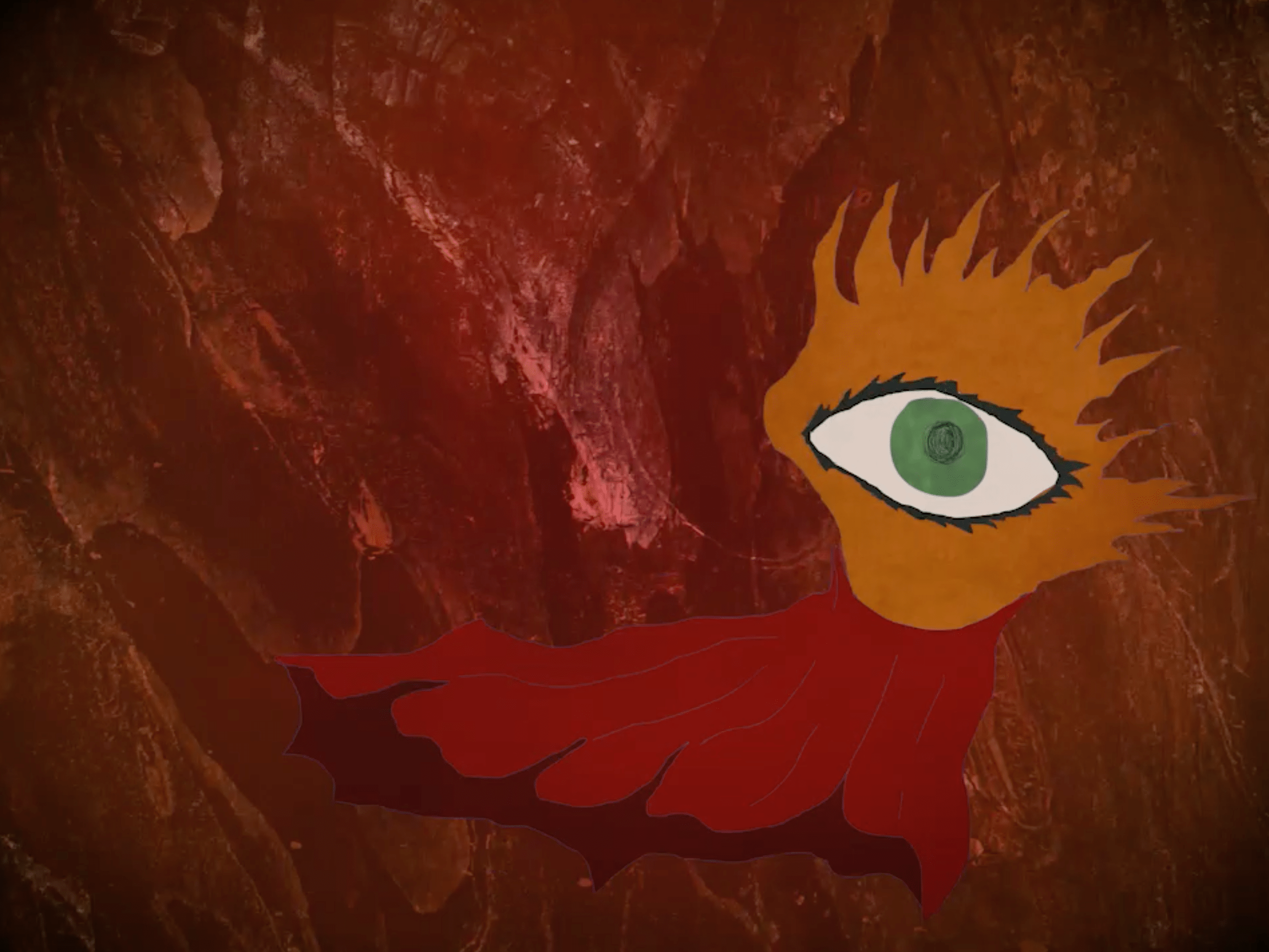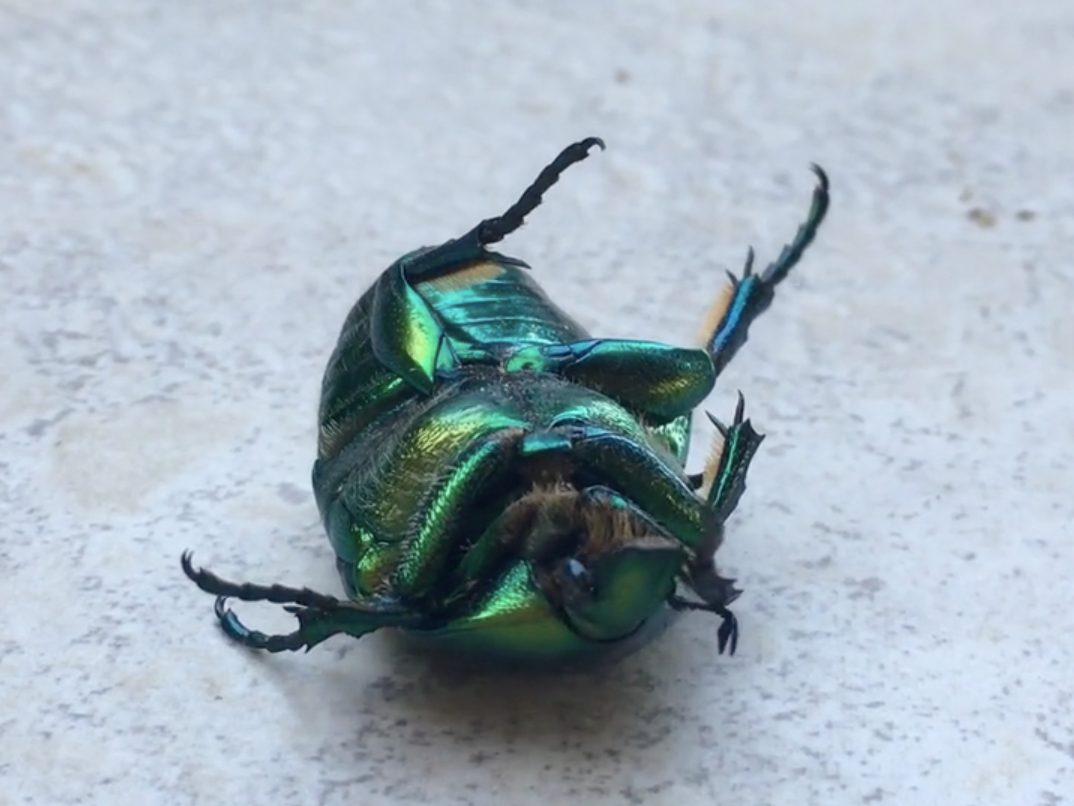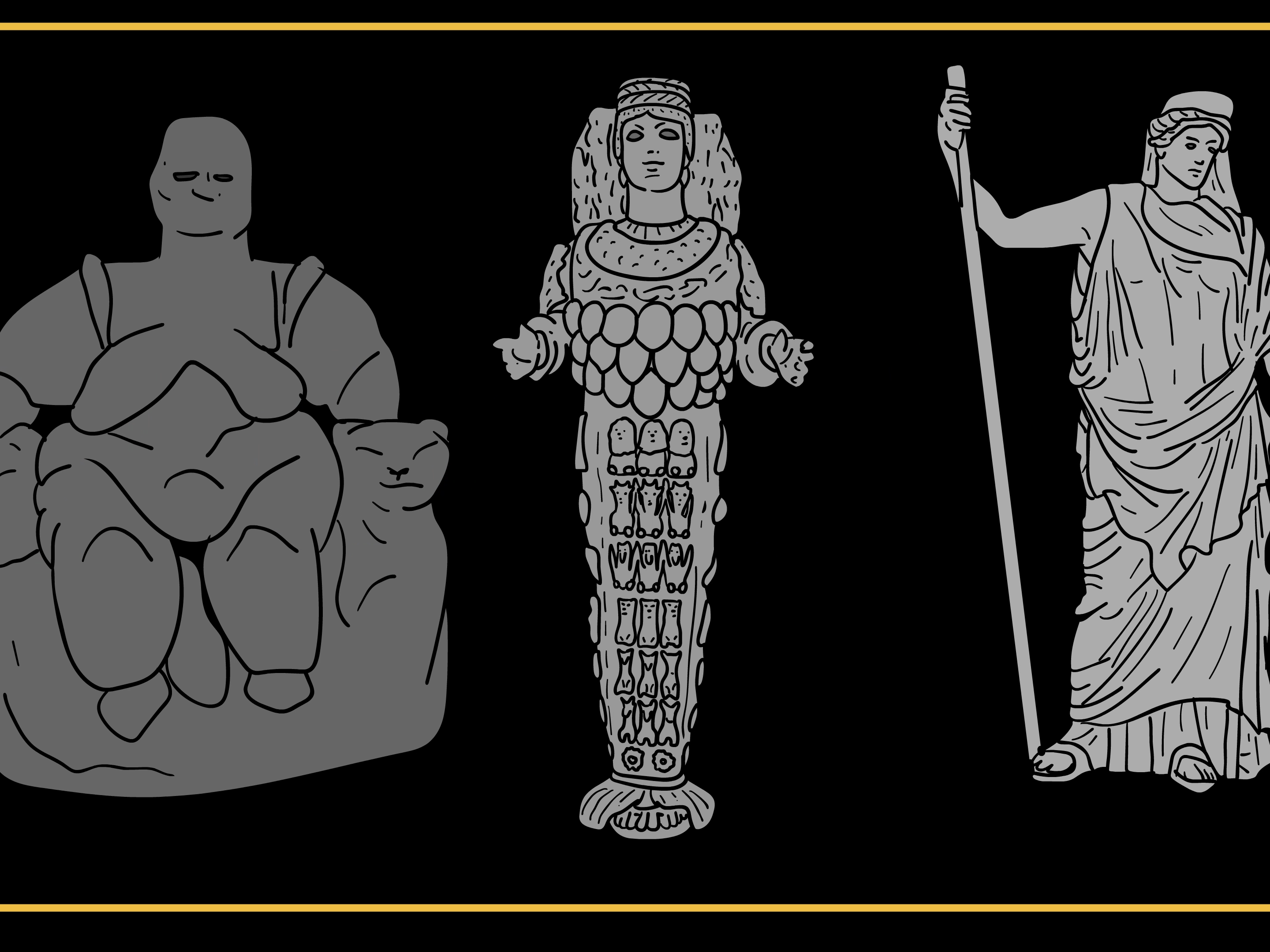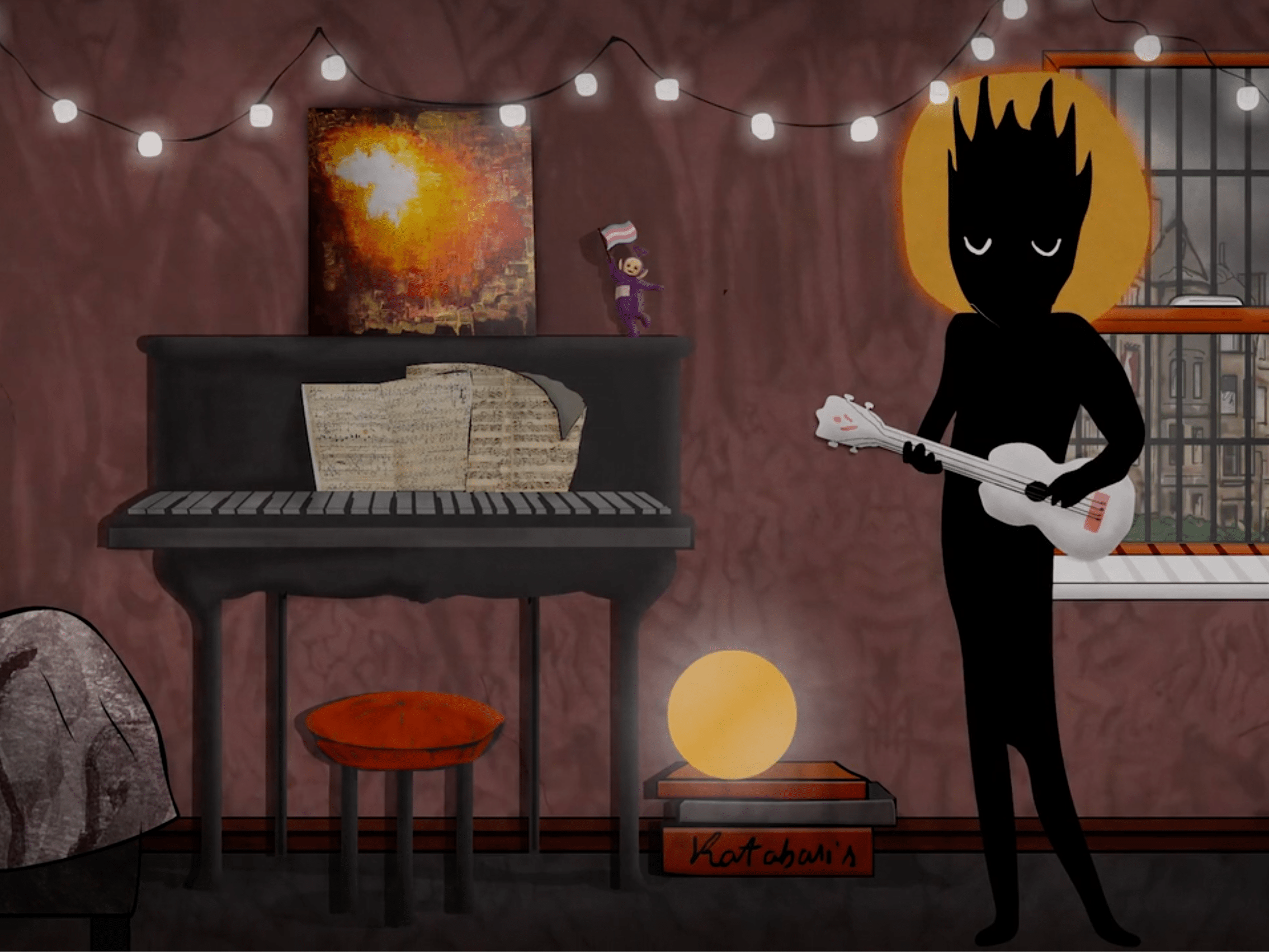Soul in the Thread:
Codes Past & Present
Using threads as modes of expression and even historical record is not a new concept. The Quipu, also known as Inca knots or strings were used as a form of writing and record-keeping. The Bayeux Tapestry in the Western world is one of the most recognised, almost comic-book-like narrative tapestries in the world. And the stunning Pazyryk rug found in Siberia, a trace of the Scythian civilisation (also known for its Amazon warriors), preserved to this day thanks to the harsh cold climate of the region, with its deep vibrant colours and detailed animals and soldiers, bears witness to the fact that the history of tapestry stretches even further back than 500 BCE.
For this exhibition, I stepped out of my comfort zone as a twenty-firstcentury artist often working with digital media, and chose the age-old form of embroidery to communicate my message. I wanted to create a handmade tapestry of women’s history, a history of labour, violence and resilience, stretching from 30.000 BCE to today, and beyond.
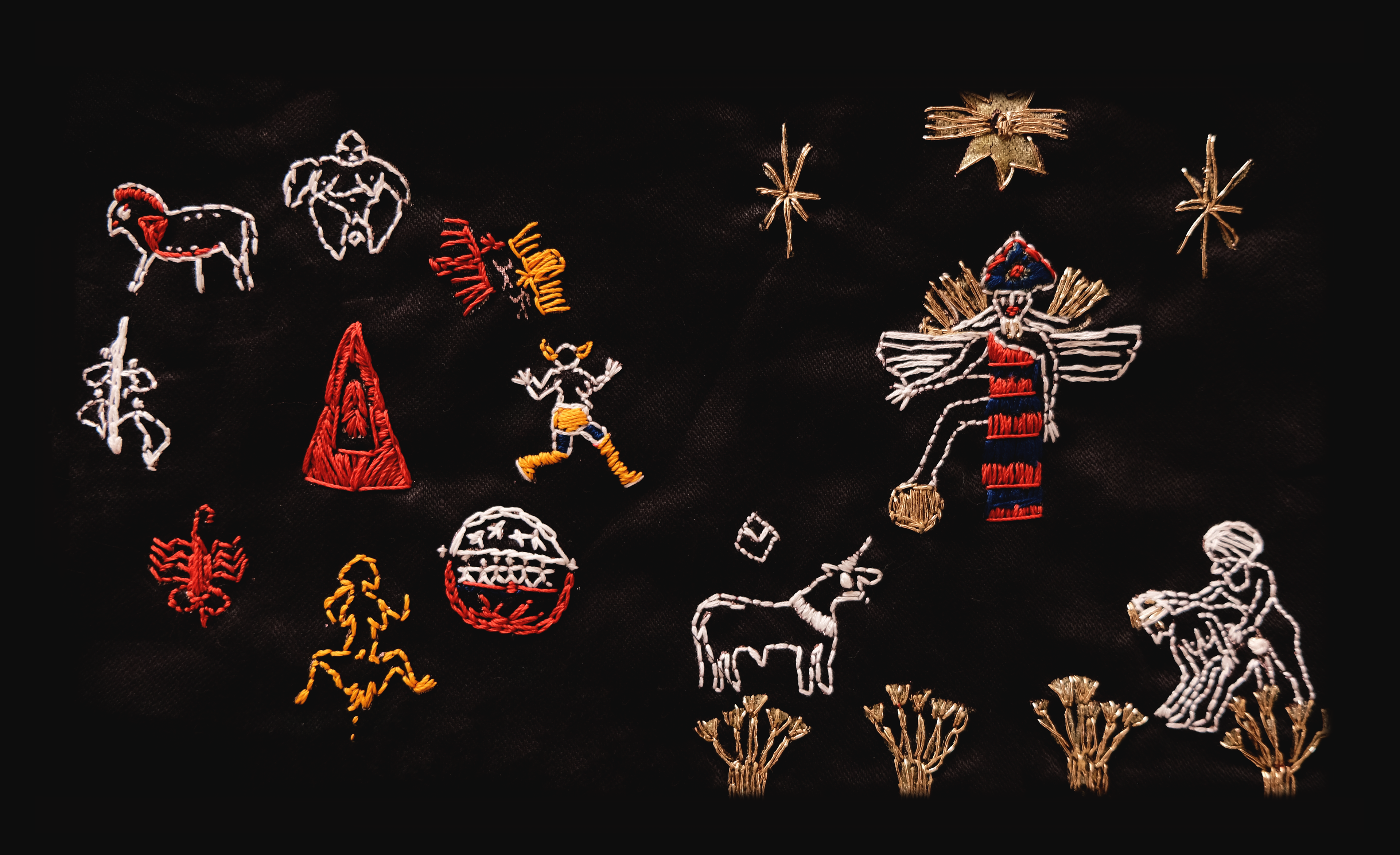
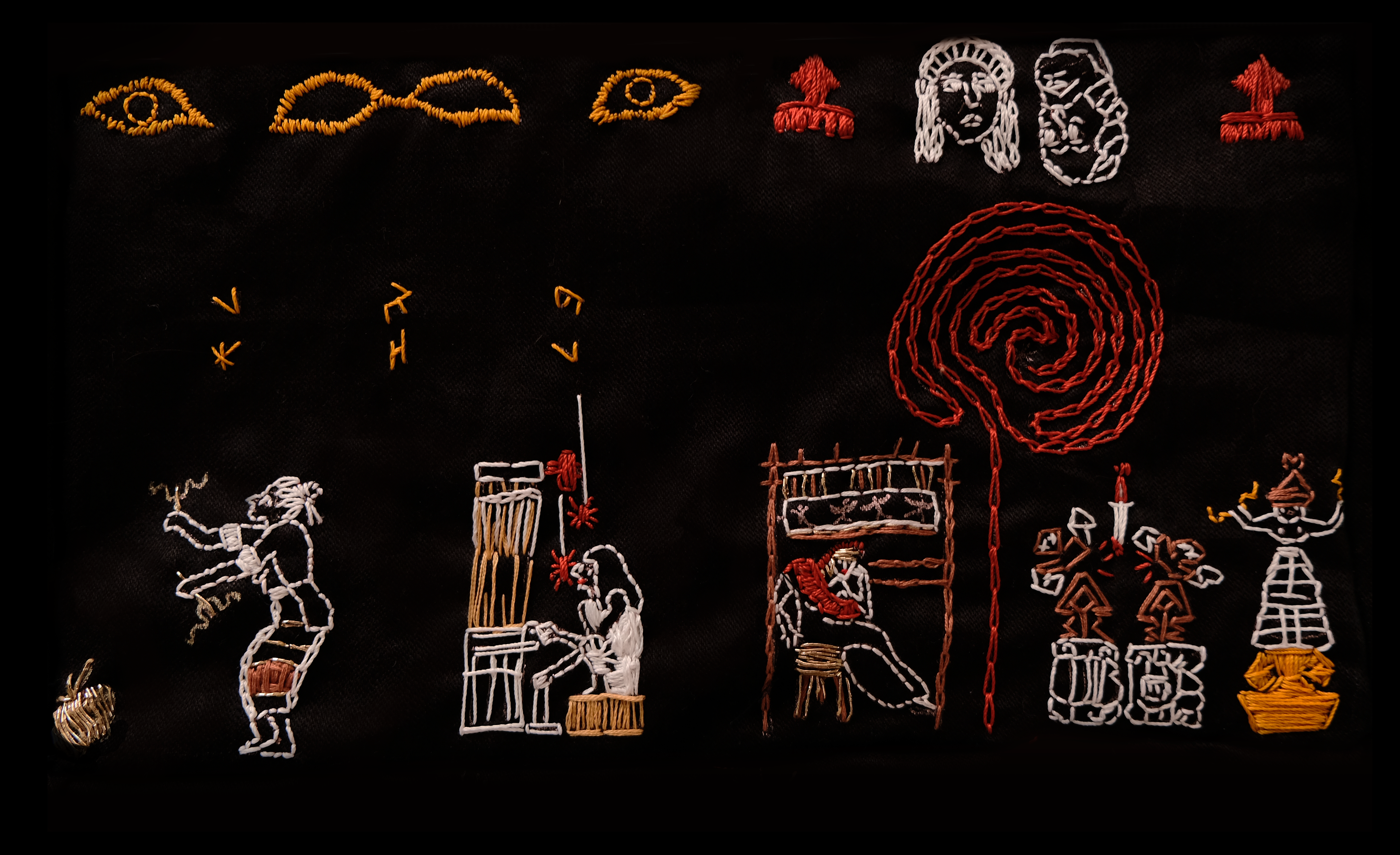
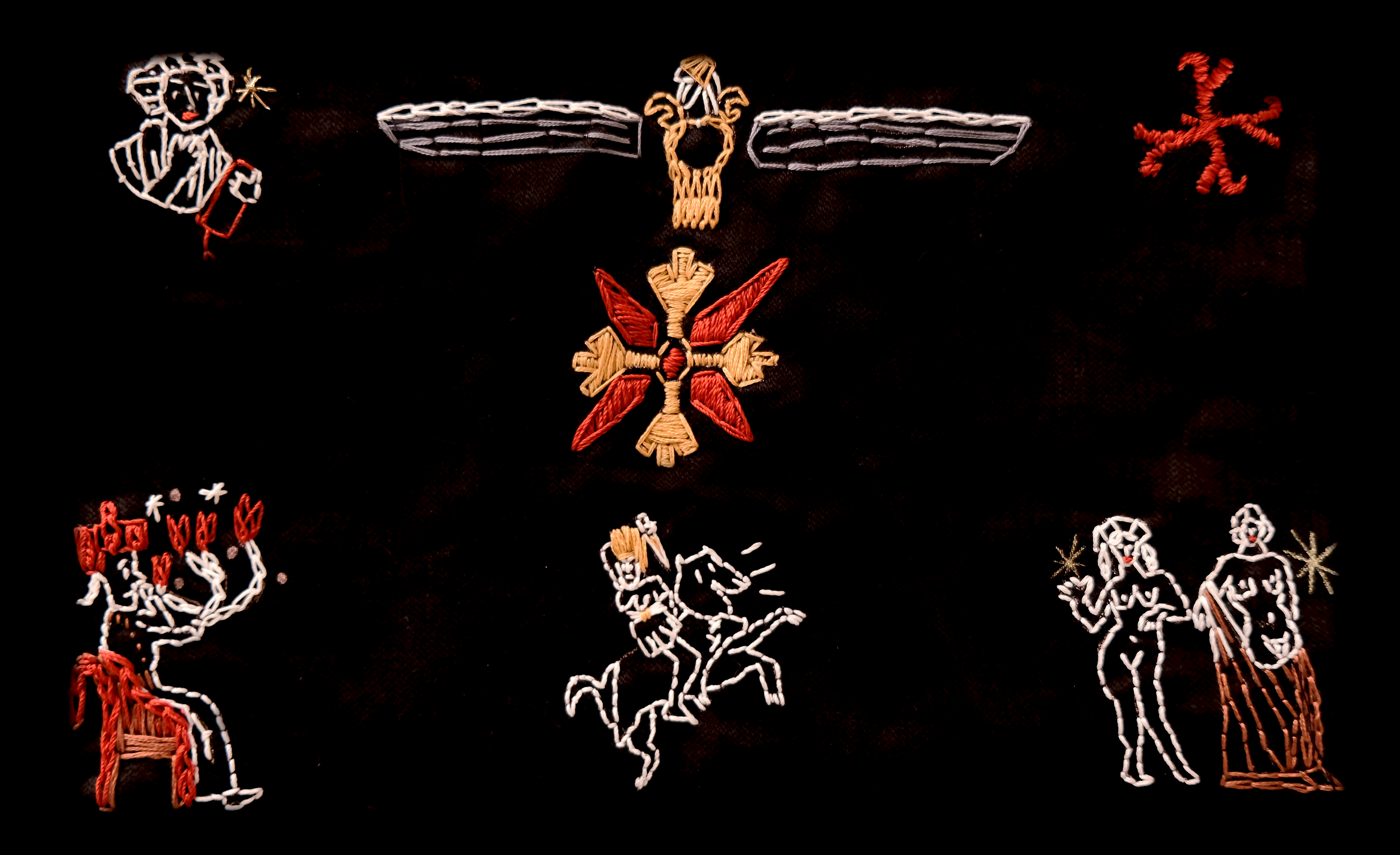
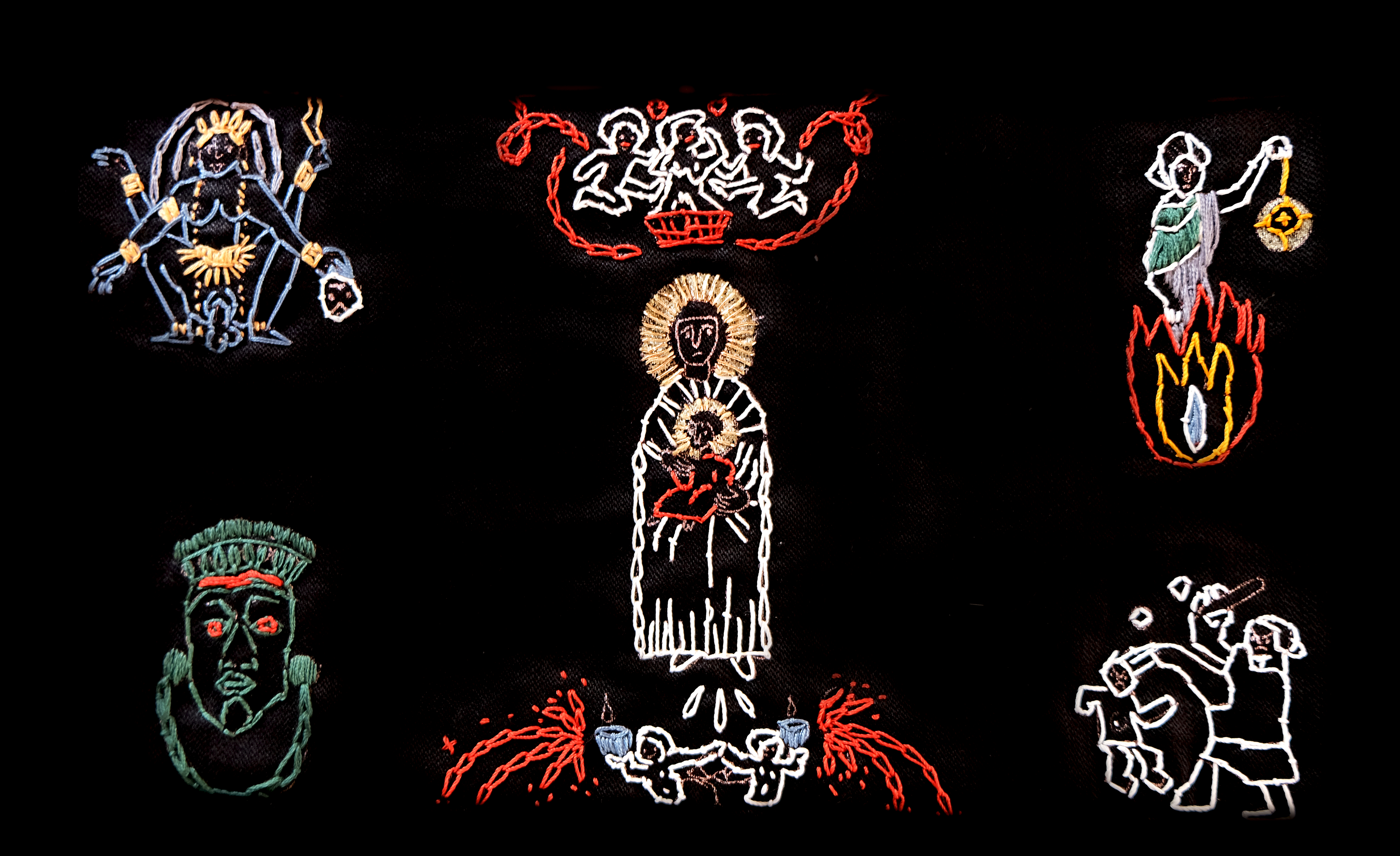
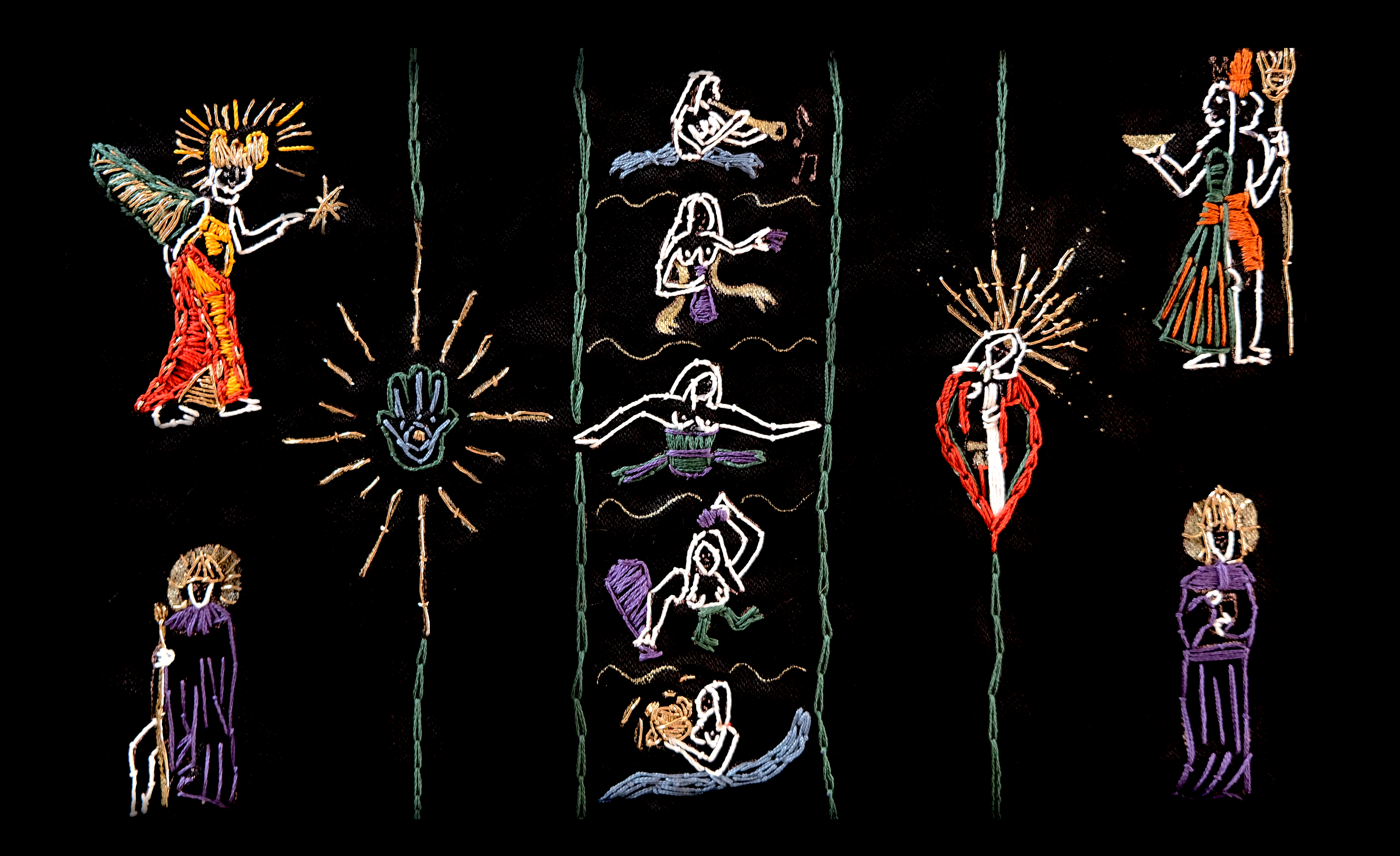
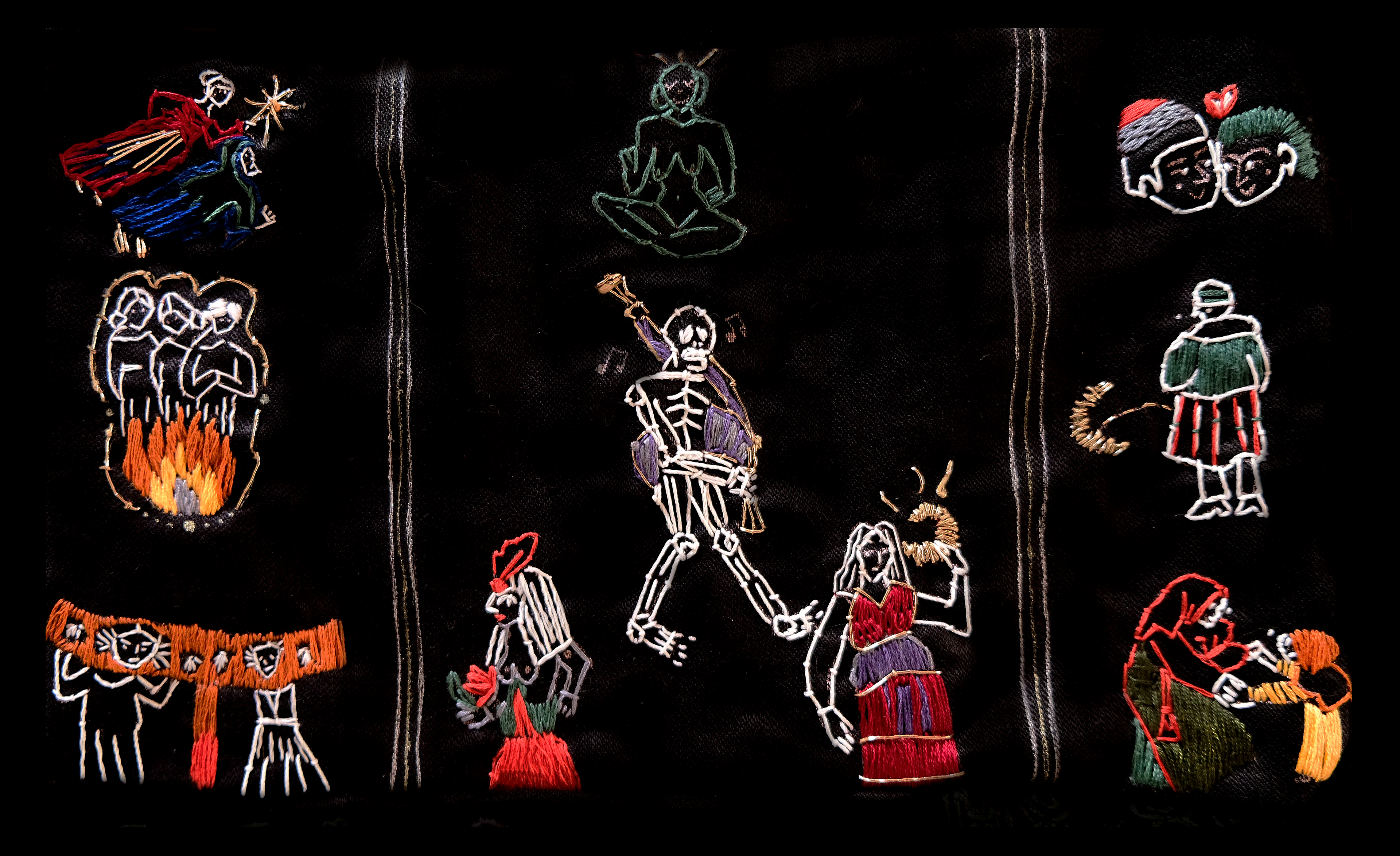

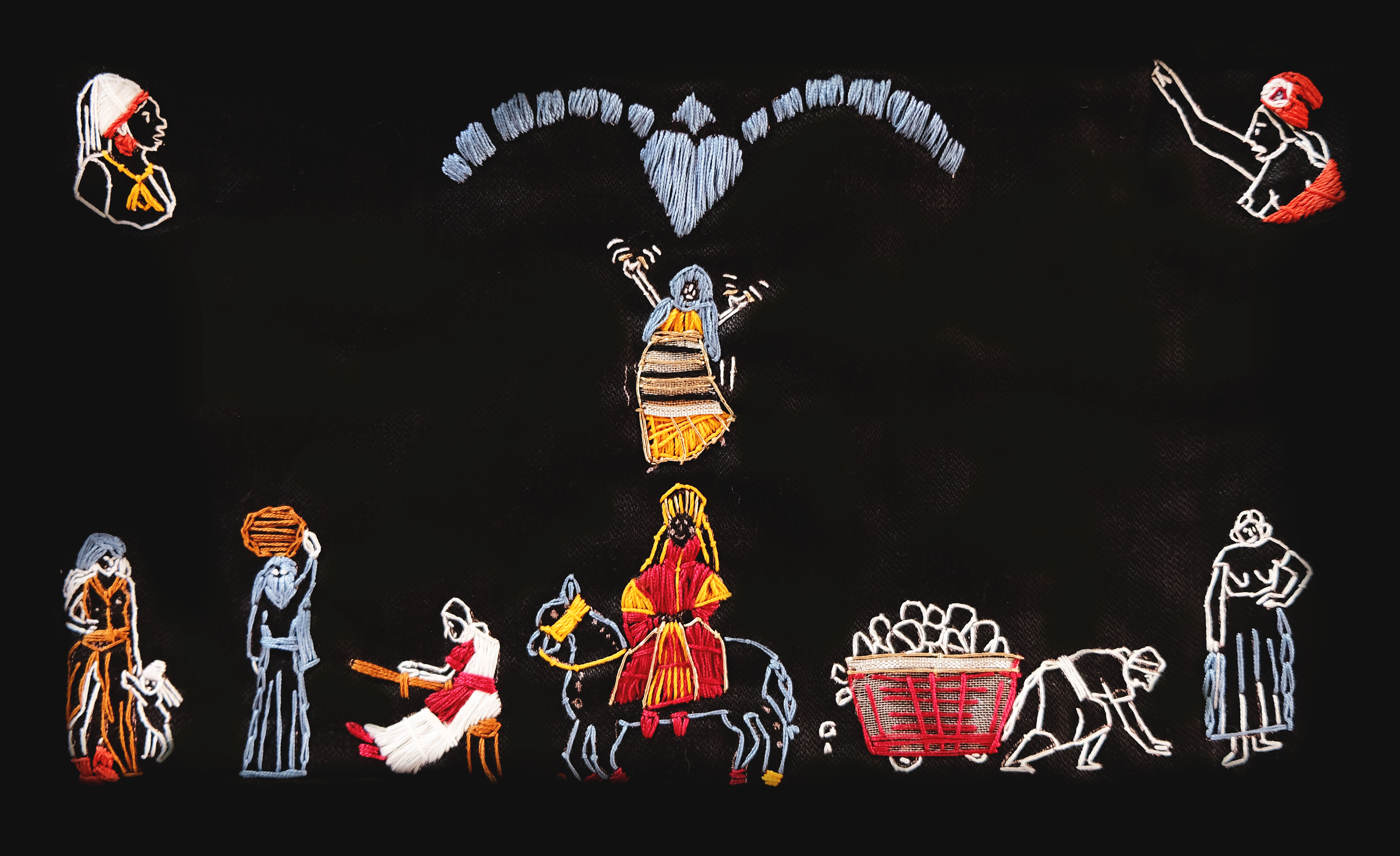

I wanted to pay homage to women of all backgrounds who weaved their hopes and dreams into motifs as they dealt with perpetually oppressive societies, by combining a traditional and ornamental medium with a more contemporary outlook. In this piece, you will find ordinary women alongside goddesses, intellectuals and artists alongside rulers and workers; the good along with the bad and the ugly. You will witness wars, plagues, crimes against humanity and fights for civil rights and social justice. All through the lens of the contemporary artists of that era and the symbols and images they chose.
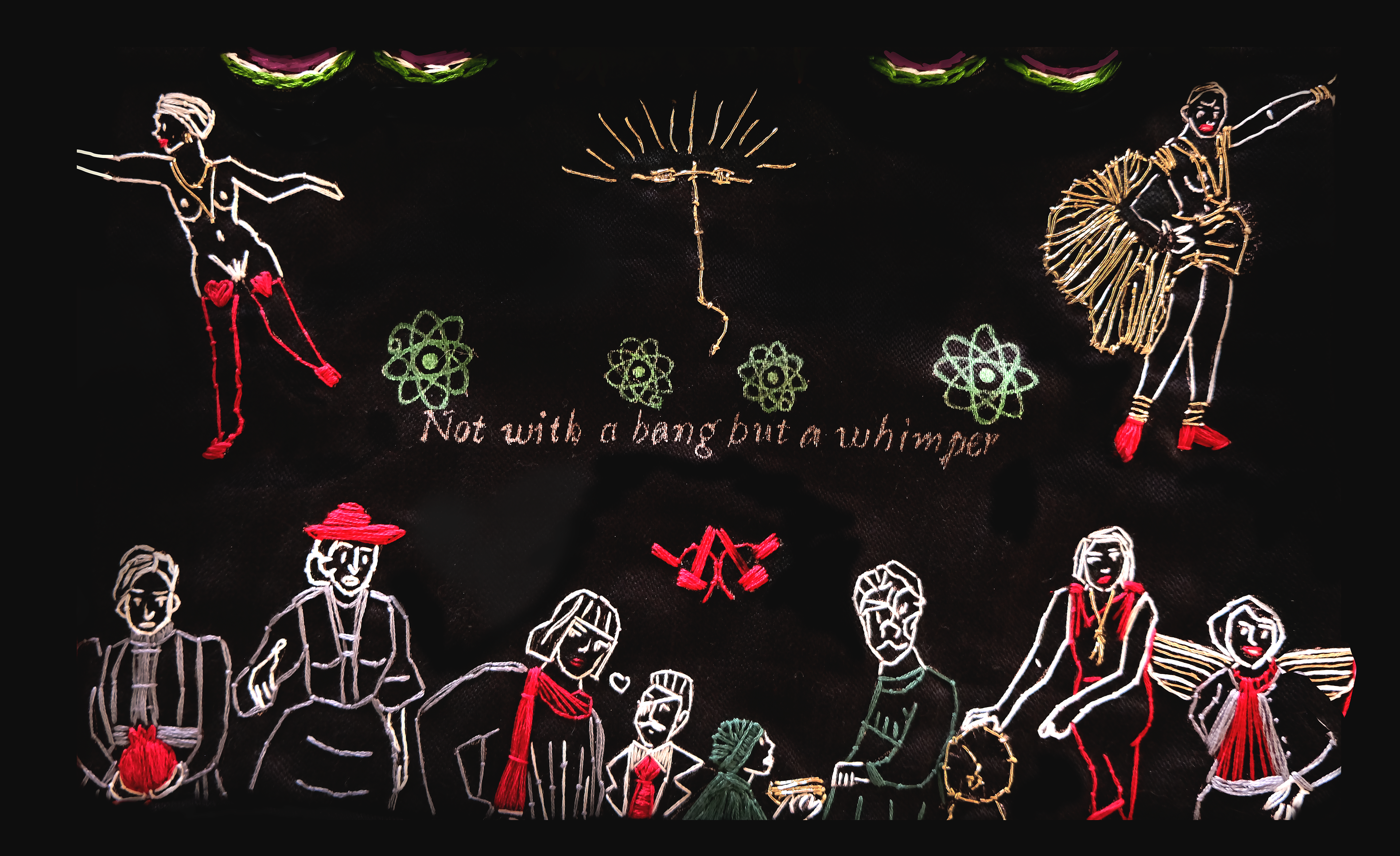
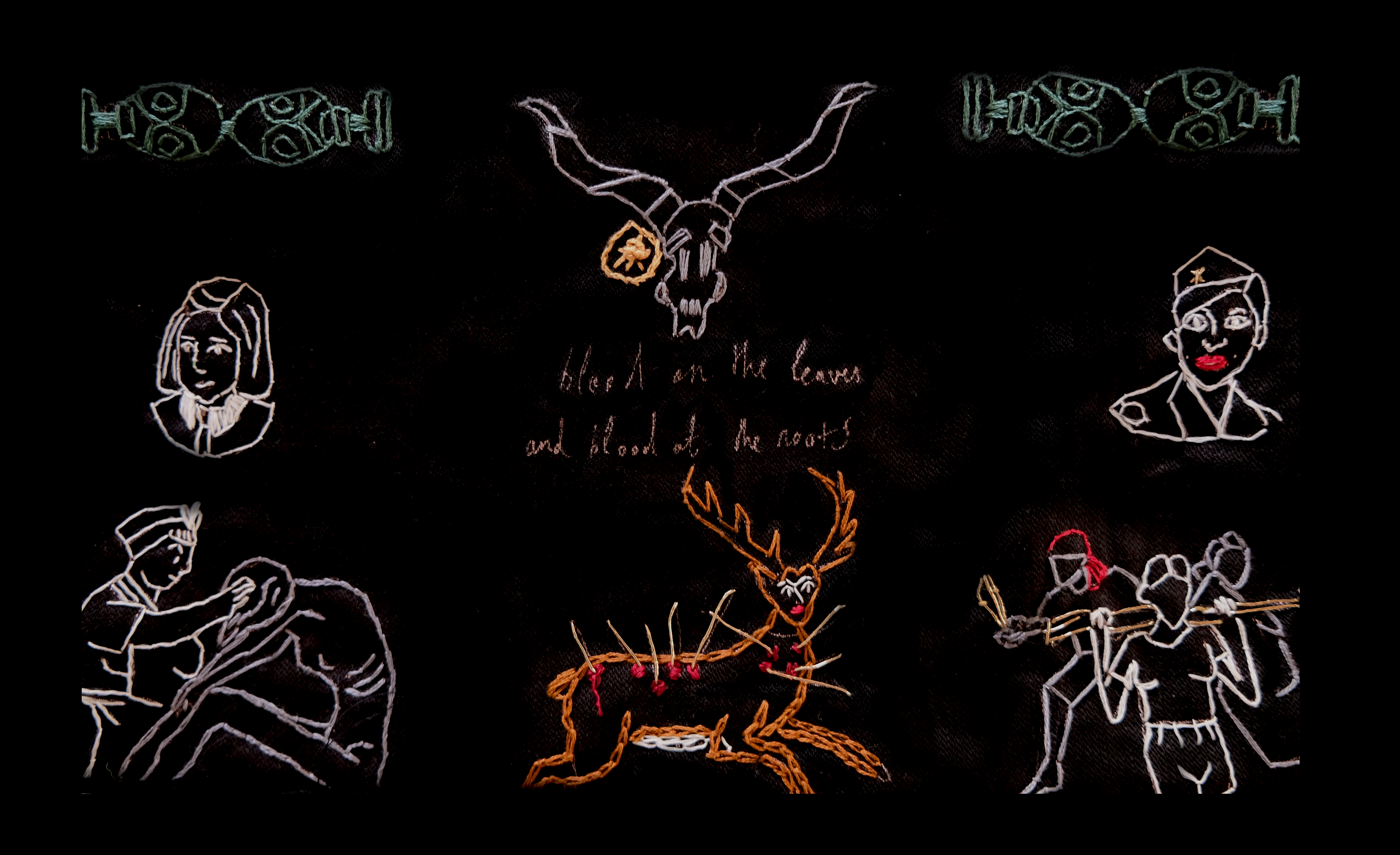
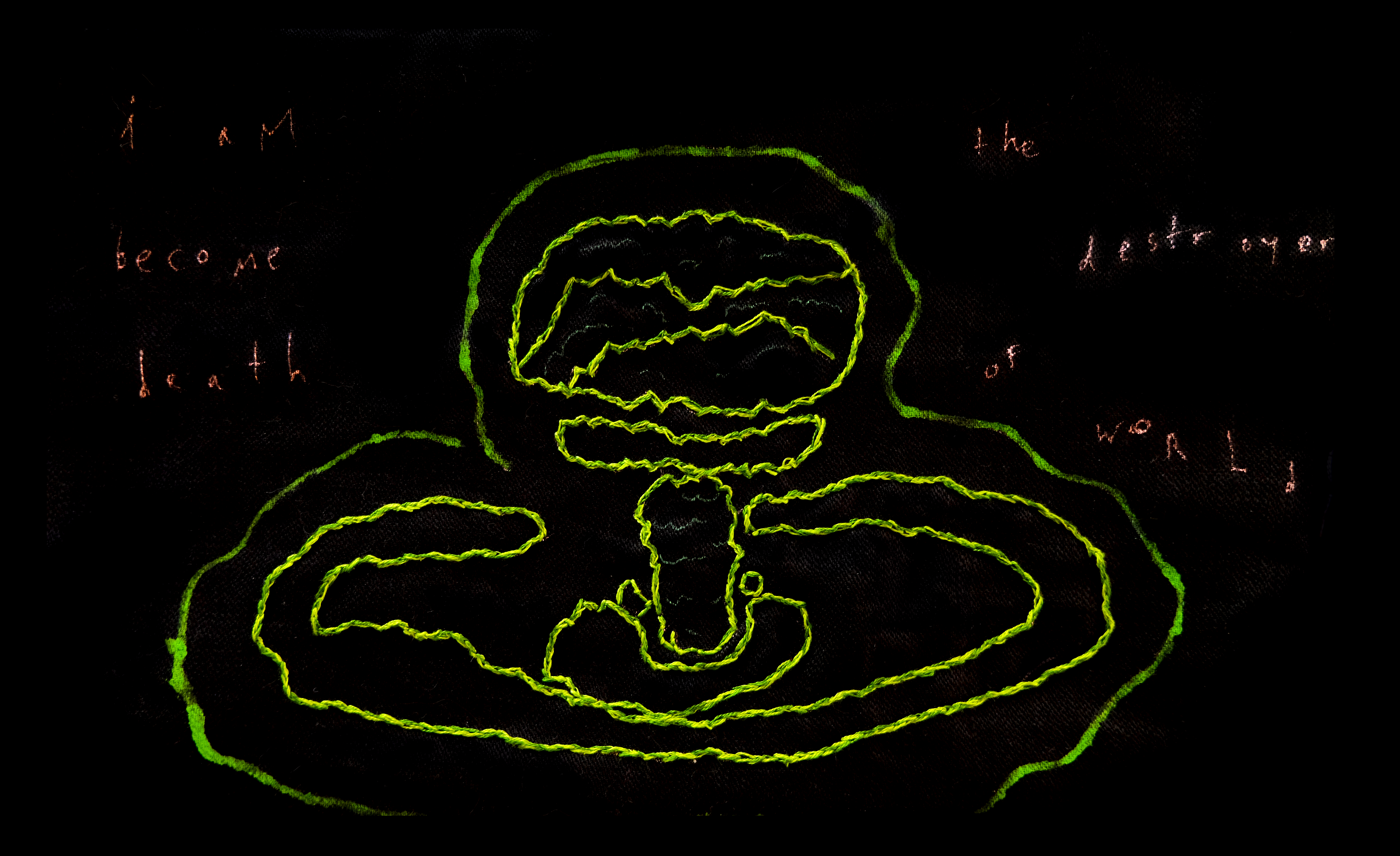
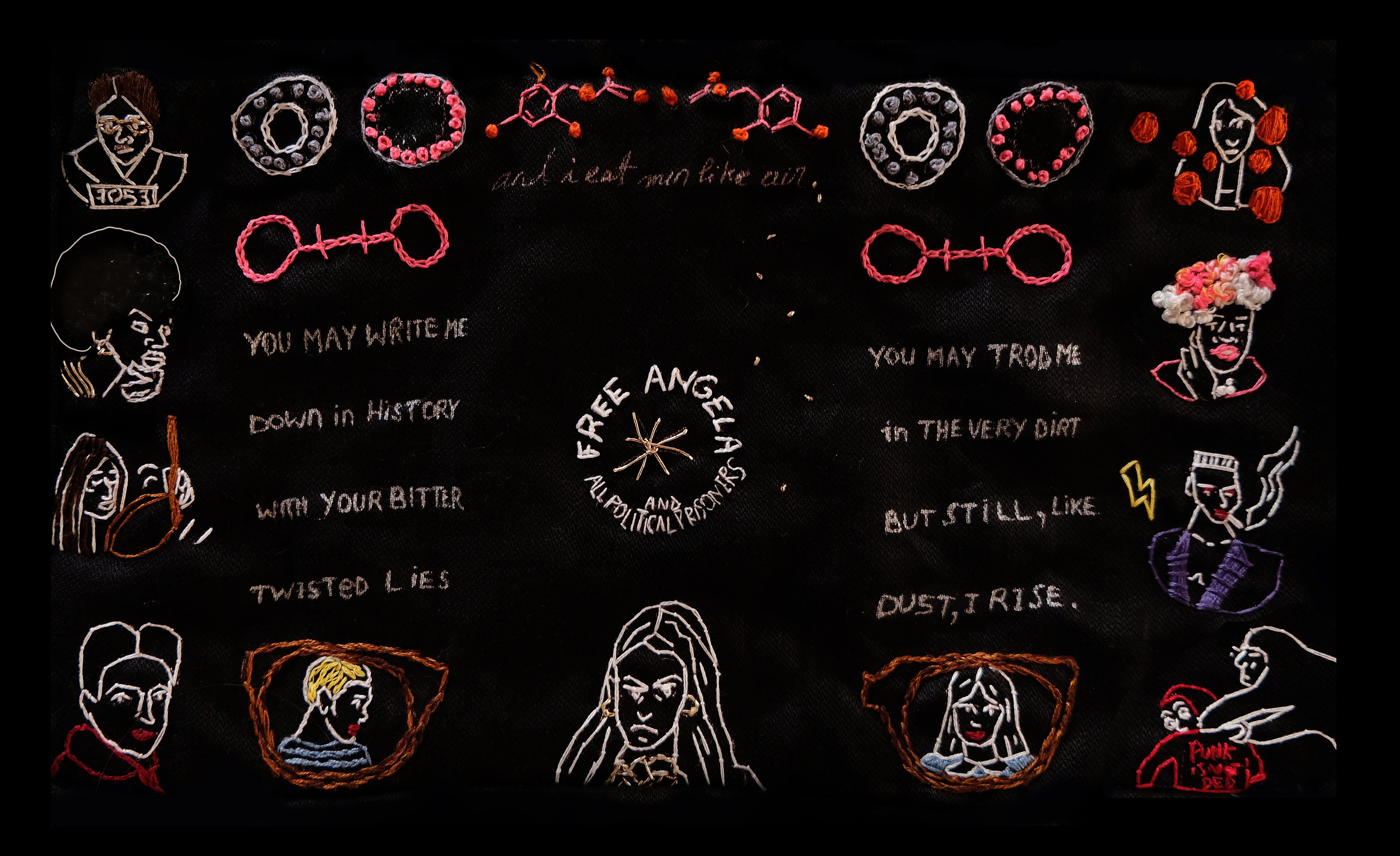
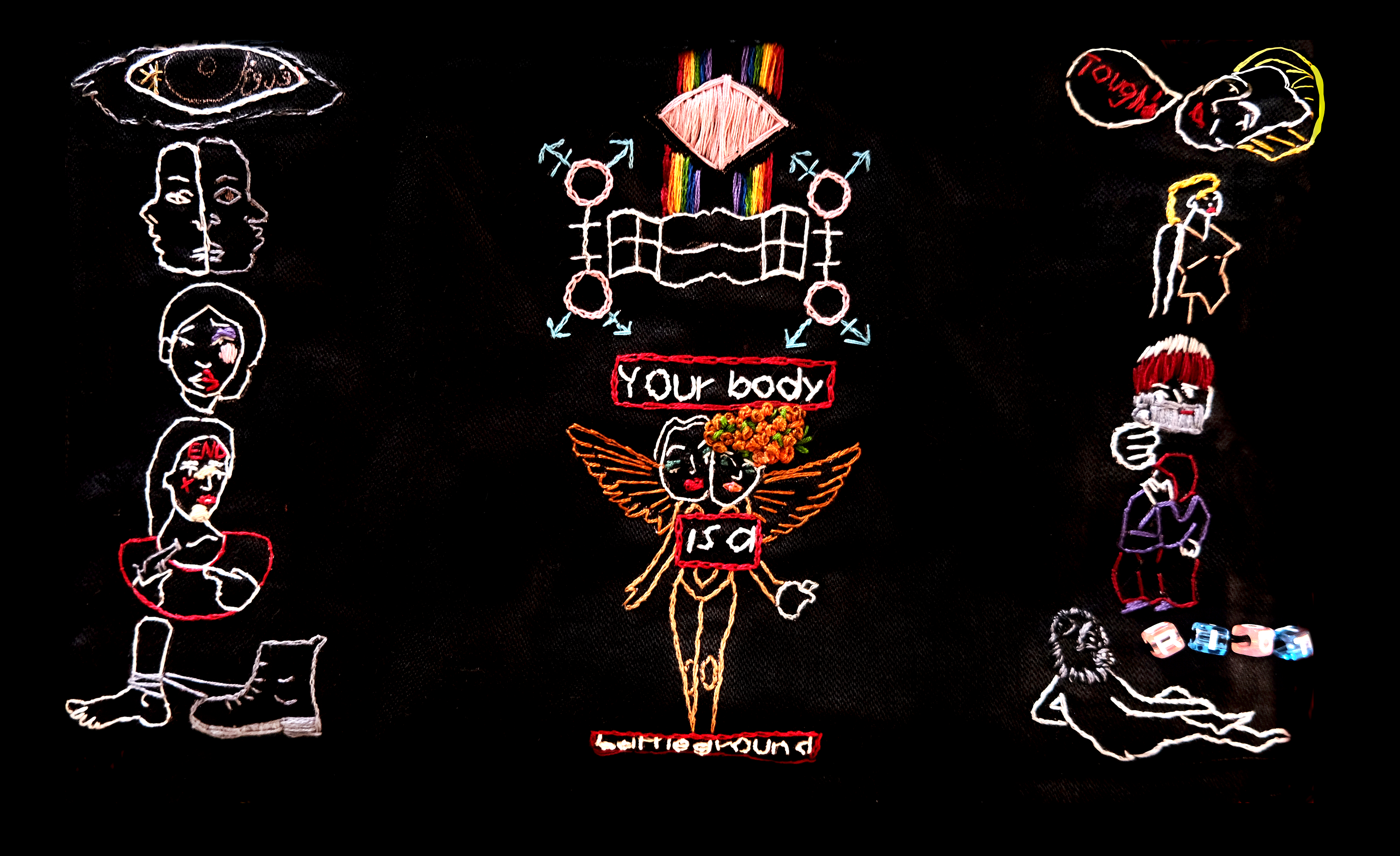
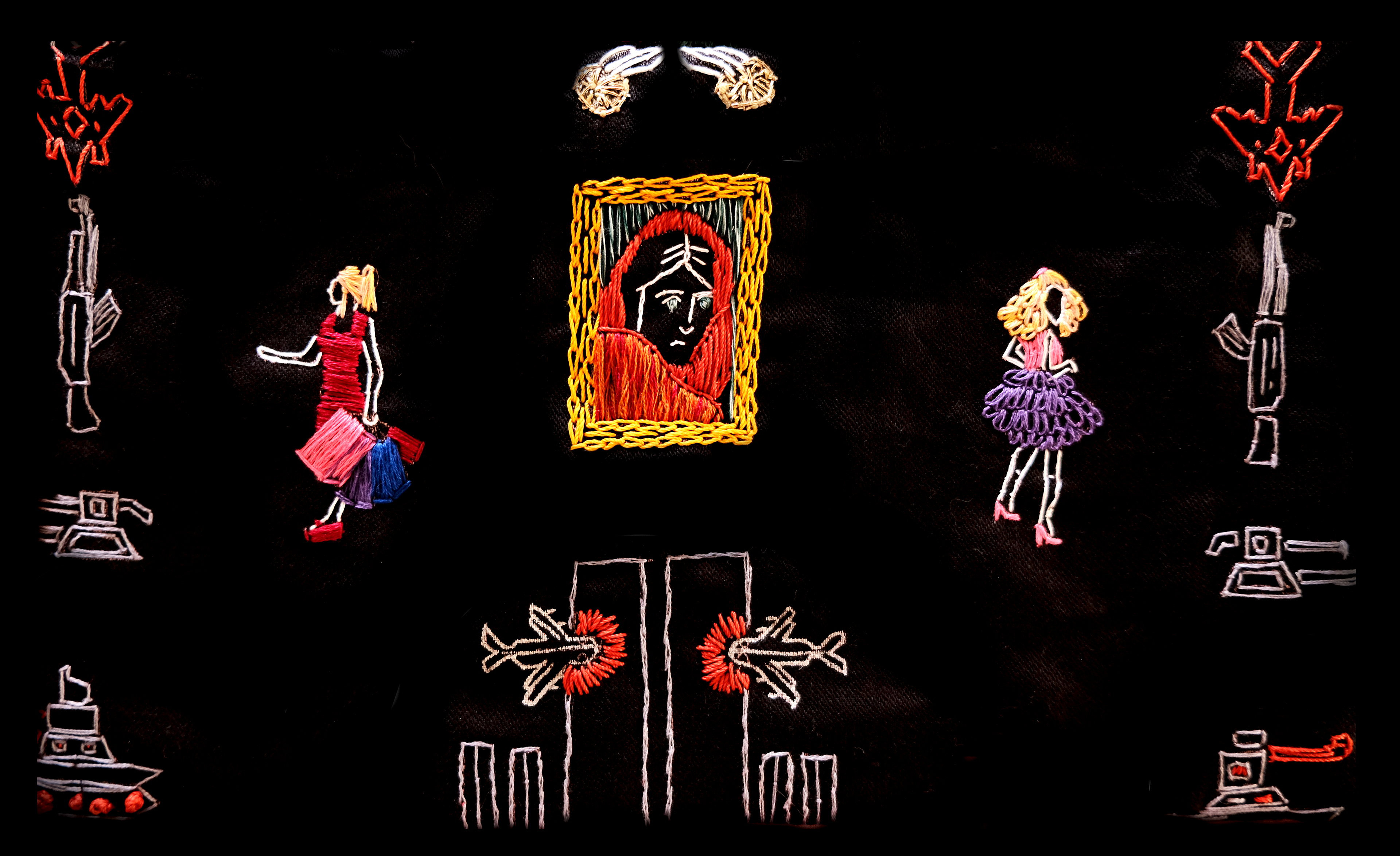
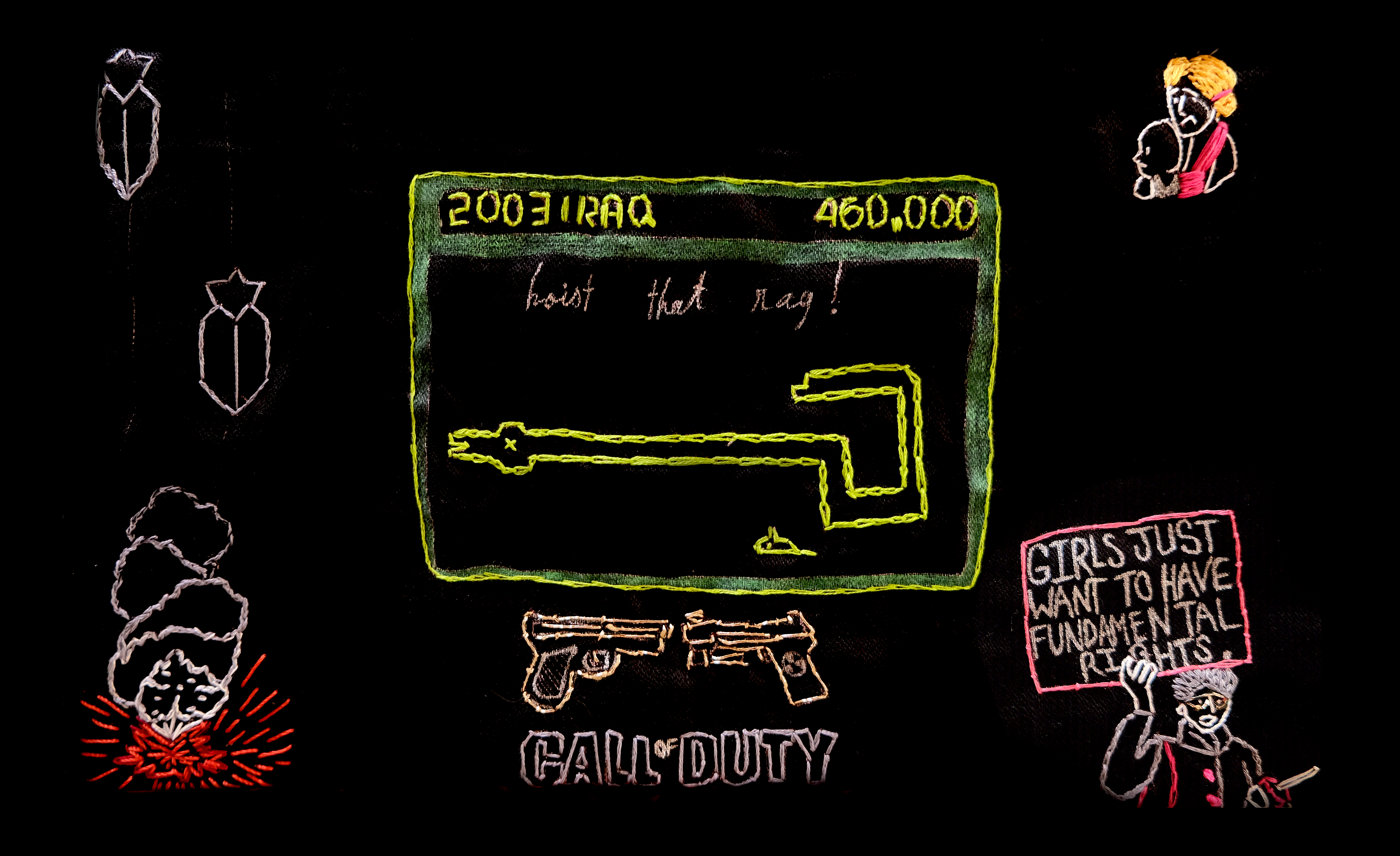

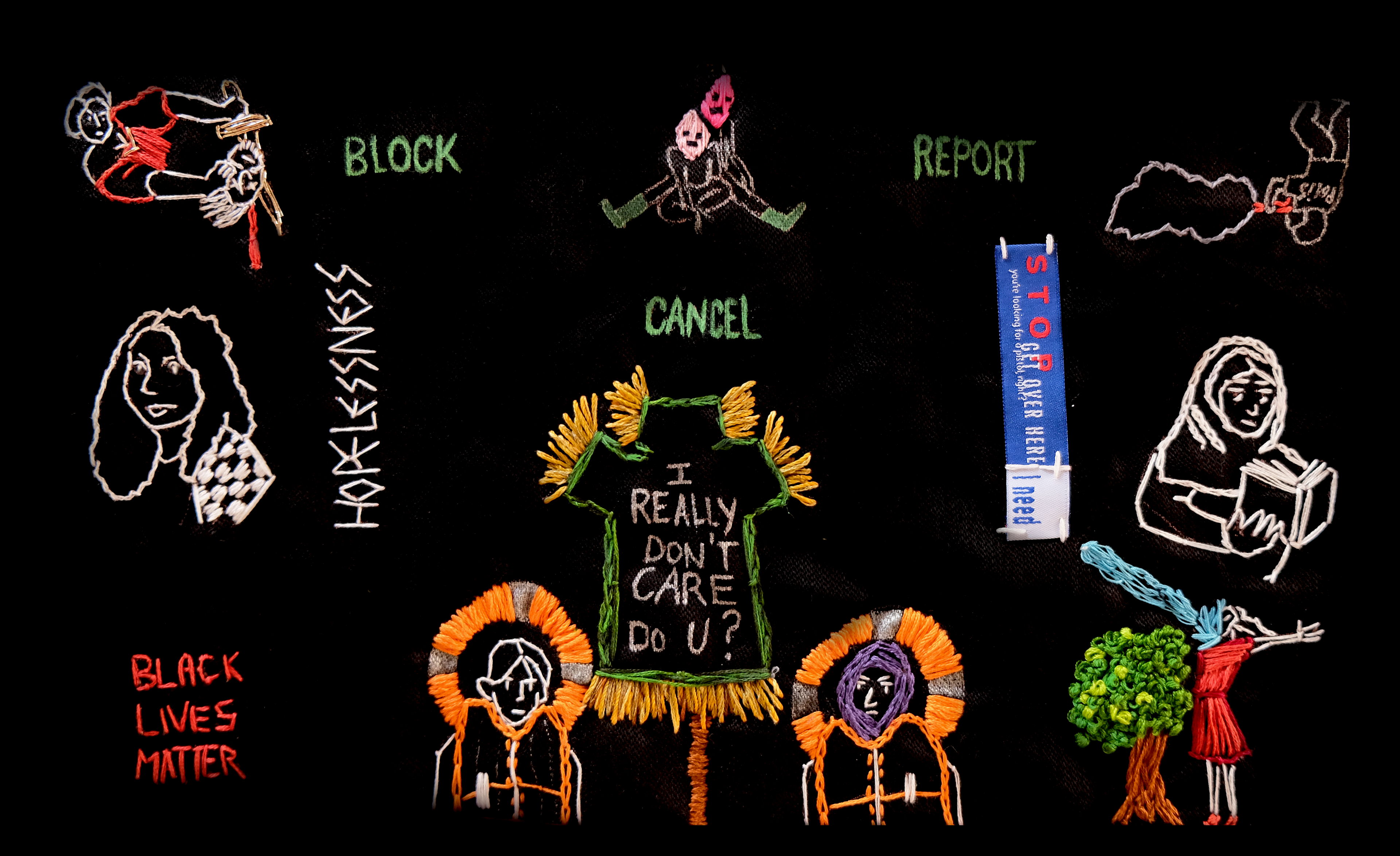
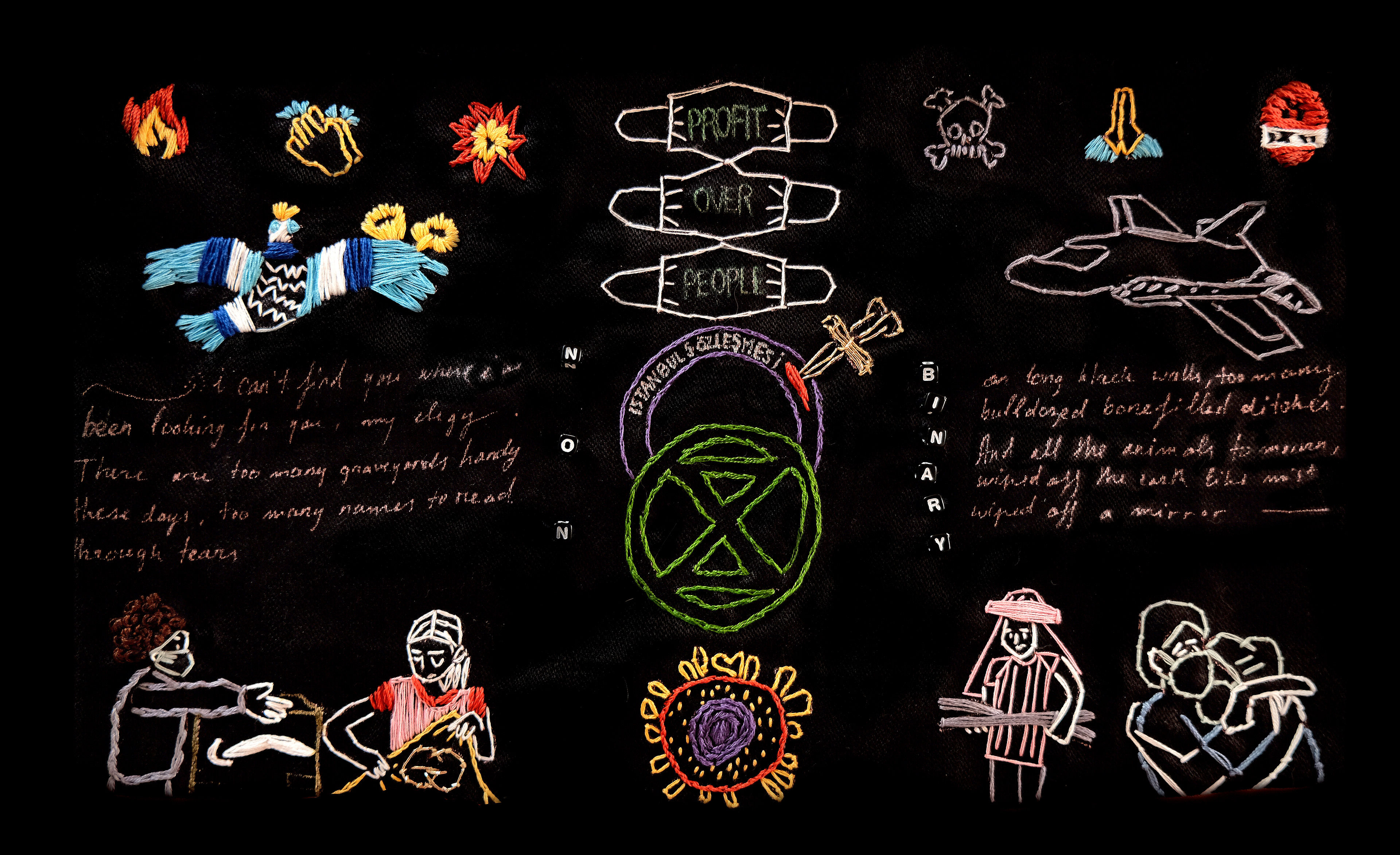
Organised by the Scottish organisation Spit It Out for Aye Festival, June 2022.



